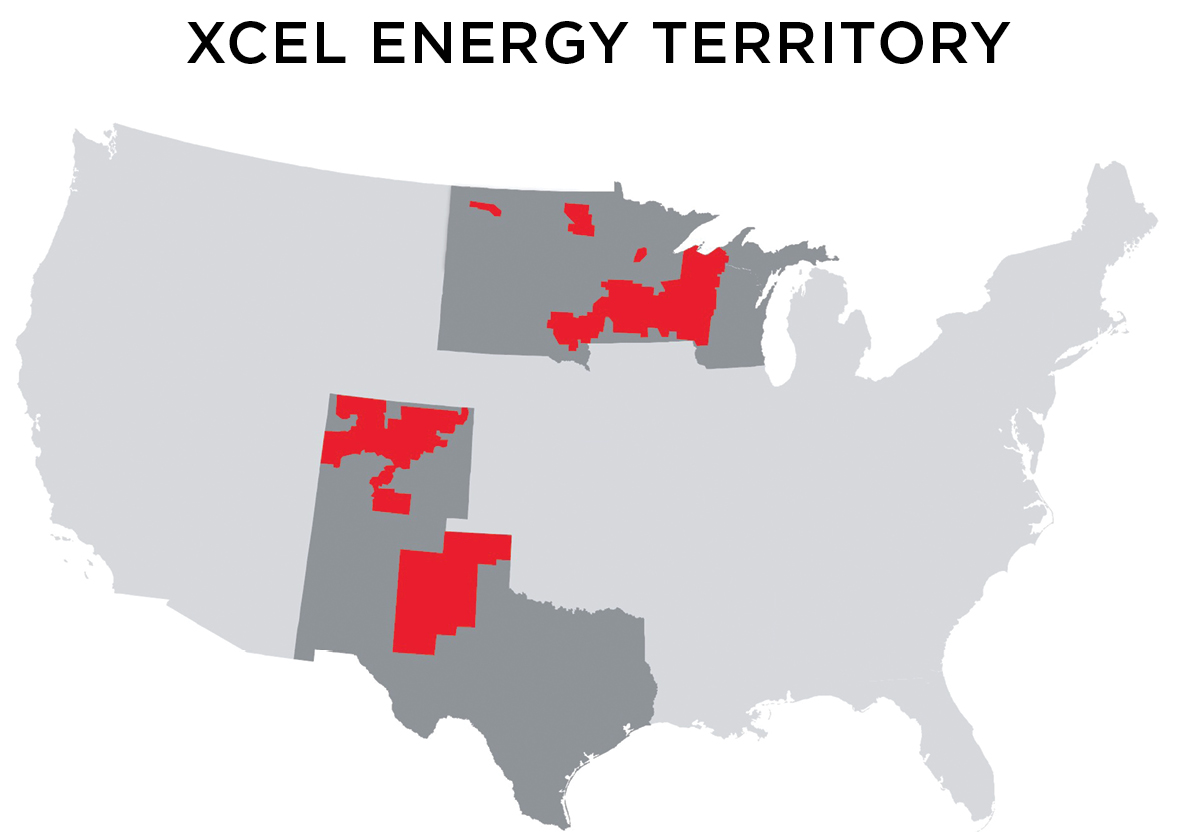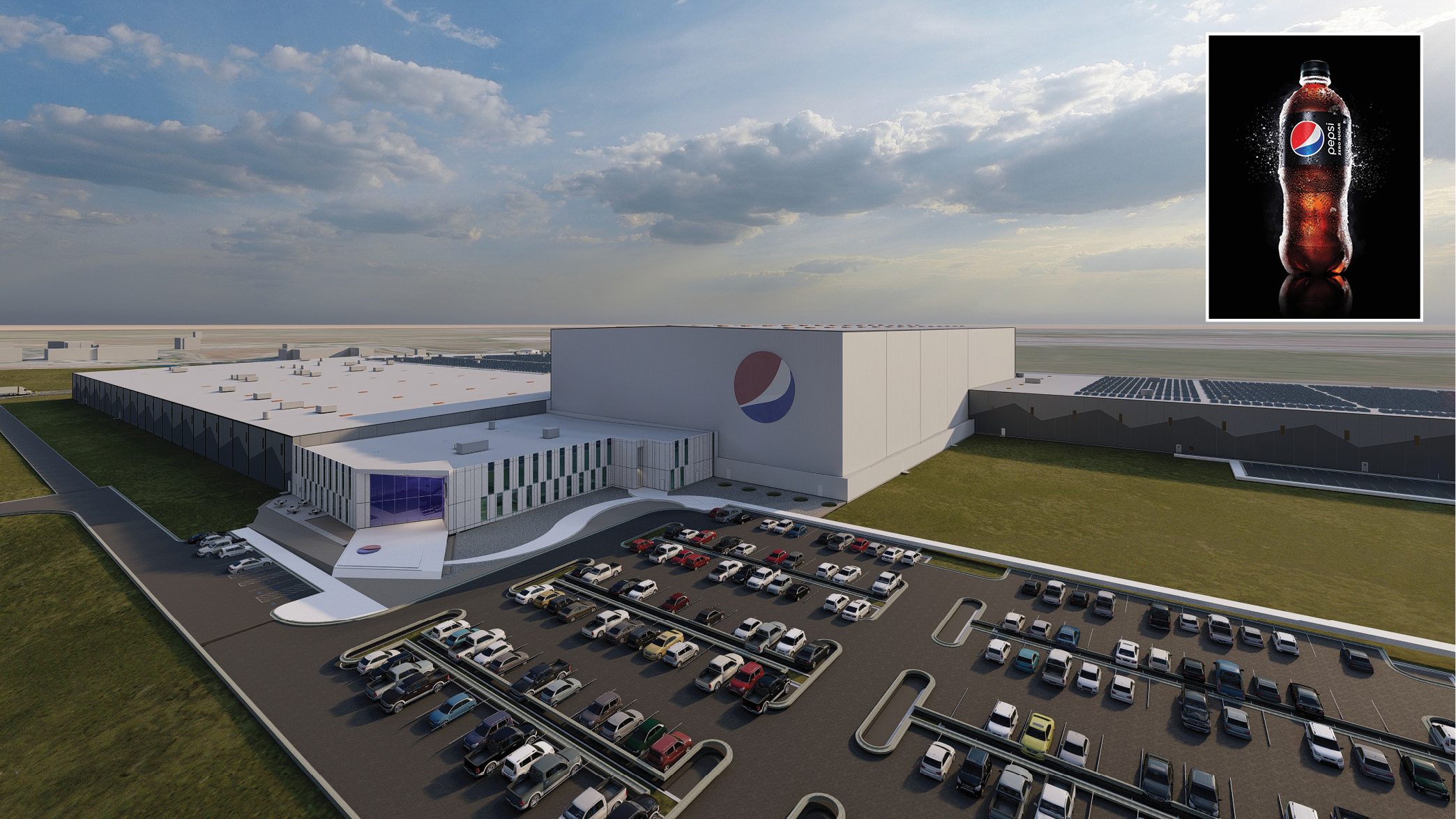In July, one week before the company closed on a $1.25 billion, 10-year Green Bond facility, PepsiCo announced a new manufacturing facility in Denver that will embody the greenest of principles.
The new 1.2-million-sq.-ft. plant on nearly 152 acres of land at the Denver High Point development area will be PepsiCo Beverages North America’s largest U.S. plant, creating 250 new jobs. The facility aims to be the company’s most sustainable domestic site in line with the PepsiCo Positive sustainability strategy.
That focus couldn’t be more in line with the ESG and sustainability commitments of Xcel Energy, one of the organizations that helped bring the PBNA project to fruition.
“One reason we chose Denver was for the community’s shared commitment to sustainability,” says a PepsiCo spokesperson. “During a site selection process that encompassed four states, the company worked hand in hand with state and local leaders to secure support, including Colorado Office of Economic Development and International Trade, Metro Denver Economic Development Corporation, Xcel Energy [who offered PepsiCo’s project its Economic Development Rate] and the Denver Economic Development Opportunity (DEDO).” Support from those organizations and Denver elected officials was a key factor in a site selection process that “looked at key site selection information on property taxes, utility availability (including available renewable energy programs) and cost, land availability and cost, workforce availability and qualifying incentives.”
Through Xcel Energy’s new economic development rate in Colorado, eligible companies can receive an electric rate discount for up to 10 years that gradually steps down from a 30% discount in years one through three.
The sustainability alignment may ultimately mean more.
Xcel Energy, whose territory covers part of eight states, aims to reduce carbon emissions by 80% by 2030 and aspires to provide customers with 100% carbon-free electricity and to power its own vehicles with carbon-free electricity or other clean energy by 2050. Xcel Energy has reduced its power sector’s carbon emissions by 50% since 2005, in part by adding 14 new wind farms across seven states between 2017 and 2022 that saved customers $1.8 billion through a combination of reduced fuel costs and tax credits.
Recycling at Heart of Minnesota Growth for Myplas
Nearly 700 miles to the northeast of Denver, but still in Xcel Energy territory, South African plastic film producer Myplas has chosen Rogers, Minnesota, a Twin Cities suburb, for a new $24.3 million, 90-job recycling facility that will one day recycle nearly 90 million pounds of polyethylene packaging. That’s equivalent to enough pallet wrap to encircle the globe 137 times. At full capacity, what is being called “the first state-of-the-art flexible film recycling plant in the U.S.” could employ as many as 300 people.
As the multi-state site selection process unfolded over two years, Xcel Energy Corporate Economic Development (CED) worked with members of the Myplas team and the Minneapolis-Saint Paul Regional Economic Development Partnership (Greater MSP) to provide capacity and incentive information. As with the PepsiCo project, an overarching sustainability commitment helped carry the day.
It starts with repurposing the site itself, formerly a distribution center. The crux of the program is a group of employers and institutions (think Cargill, Target, General Mills and the University of Minnesota) called the MBOLD coalition, launched in May 2022 to create a regional circular economy for flexible films and packaging materials. MBOLD says the U.S. uses 12 billion to 15 billion pounds of flexible packaging and films annually, but only an estimated 5% of flexible films are recycled each year.

“Once we knew that we would be expanding our business into other states [we had been looking at three other Midwestern states],” says MyPlas U.S. CEO Andrew Pieterse, “our site selection process was very much dependent on: 1) the usual economics, mainly budget and cash flow requirements (deposits), etc.; 2) operational constraints and requirements (for example roof height and floor reinforcement); 3) infrastructure requirements like transport links, but also electricity and water needs; 4) local and labor market; 5) Minnesota Department of Employment and Economic Development [DEED] incentives support.
“Now we are looking forward to building out the site for our needs,” Pieterse says “and continue our work with our local partners to turn it all into an actual manufacturing site.”
Working with partners to turn opportunities into projects is what Xcel Energy’s Corporate Economic Development team does all day every day, including a site inventory of more than 415 properties that features a broad and growing family of Certified Sites, Ready Sites and Ready Buildings. Keeping things affordable as the energy transition unfolds is also top of mind: Through 175 different energy efficiency programs in 2021, Xcel Energy customers completed more than 4 million conservation projects, saving enough energy to power over 200,000 homes.
“While we’re focused on meeting our customers’ needs today” wrote Bob Frenzel, chairman, president and CEO of Xcel Energy, in the company’s 17th sustainability report this summer, “our eyes are also on the future — on what value we can deliver in the next one to two decades.”
This Investment Profile has been produced under the auspices of Xcel Energy. For more information, visit xcelenergy.com.

